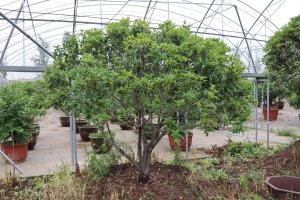Do Ferns Make Good Indoor Plants?
Ferns are known for their delicate foliage and are a popular choice for gardens and indoor spaces. But do ferns make good indoor plants? Let's take a closer look at their requirements and characteristics to find out.
The Benefits of Indoor Ferns
Ferns can be a great addition to indoor spaces for several reasons. Firstly, they are excellent air purifiers and can remove pollutants from the air. This makes them a great choice for people who suffer from allergies or for those who live in areas with high pollution levels.
Secondly, ferns are relatively easy to care for and don't require a lot of attention. They are hardy plants that can tolerate a range of conditions, making them accessible to even the most novice gardener. Additionally, they come in a range of sizes and shapes, which means they can fit into any indoor space, regardless of its size or style.
The Challenges of Indoor Ferns
There are, however, some challenges to growing ferns indoors. One of the biggest challenges is that they require a lot of humidity. This can be difficult to achieve, particularly in dry indoor environments. Adding a humidifier or placing a tray of water near the plant can help to increase the humidity around the fern.
Ferns are also prone to root rot, which occurs when the roots are exposed to too much water. It's important to ensure that the soil is well-draining and not watered too frequently. Alternatively, placing a layer of gravel at the bottom of the pot can help to improve drainage and prevent root rot from occurring.
Tips for Growing Indoor Ferns
To get the most out of your indoor fern, here are some tips to keep in mind:
Choose a pot with drainage holes to prevent root rot.
Plant the fern in well-draining soil that is rich in organic matter.
Keep the soil humid by misting the plant regularly, using a humidifier or placing it near a tray of water.
Position the fern in a bright, but not direct, light source. They prefer filtered light or indirect sunlight.
Water the plant regularly, but be careful not to overwater. Check the soil moisture level using a moisture meter or by sticking your finger into the soil.
Feed the fern with a balanced houseplant fertilizer once a month during the growing season.
If you notice any yellowing or wilting leaves, adjust the humidity, water or light conditions accordingly.
Conclusion
In conclusion, ferns can make excellent indoor plants provided that they are given the right conditions. With a little bit of attention, these hardy plants can thrive in any indoor environment and provide their owners with a range of benefits, including improved air quality and a touch of natural beauty.

 how many times do yo...
how many times do yo... how many planted tre...
how many planted tre... how many pine trees ...
how many pine trees ... how many pecan trees...
how many pecan trees... how many plants comp...
how many plants comp... how many plants can ...
how many plants can ... how many plants and ...
how many plants and ... how many pepper plan...
how many pepper plan...



























